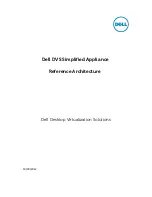
BUILDING ETHERSOUND NETWORKS
ETHERNET CABLES
Cables used within the EtherSound network are straight cables.
The cable used to connect the PC to the primary master is a crossover cable
The following paragraphs describe the main cable types used. Among them, you will
find descriptions of cables listed for reasons of completeness, but that are not suited
for EtherSound networks.
ThickNet (ThickWire)
ThickNet (10Base5 Ethernet) is a thick, bulky, coaxial cable. It is generally used to
create large “backbones”. A network backbone connects many smaller network
segments into one large LAN. ThickNet can support many nodes in a bus topology,
the segment can be quite long.
Thin Coax
Thin coax (10Base2 Ethernet) offers many of ThickNet’s advantages for bus topology,
but it is less expensive and easier to install. Thin coax coaxial cable is significantly
thinner and more flexible than ThickWire, but it supports only 30 nodes. With these
restrictions, thin coax can still be used to create backbones, but is rather used to
design small networks.
Twisted Pair
Unshielded twisted pair (UTP) is similar to the telephone cable that may already be
installed in your building and available for network use. There are several grades of
UTP cables, each higher grade offering better performance. Level 1 and Level 2
cables are the lowest grades and least expensive ones, designed primarily for low-
speed and voice transmissions (less than 5Mbps). They should not be used in the
design of 10BaseT networks. Level 3 and Level 4 cables are very common for current
10BaseT configurations; Level 3 cable can support speeds of up to 16Mbps (32Mbps
in full-duplex), Level 4 up to 20Mbps (40Mbps in full-duplex). All these cables use
RJ45 connectors.
In order to maintain the electromagnetic performance and
diminish the number of possible errors DO NOT USE unshielded twisted paris.
CAT5, 5e, 6, 7 cables
Level 5 cable supports transmission rates of up to 100Mbps (200Mbps in full-duplex),
CAT5e, even 1Gbps - is the most common today. Category 6 supports up to 10Gbps,
for CAT6 and CAT7 new standards are under development.
Horizontal (solid) cable and patch (stranded) cable
Both UTP and STP come in stranded and solid wire varieties. The stranded wire is the
most common and is also very flexible for bending around corners. Solid wire cable
has less attenuation and can span longer distances, but is less flexible than stranded
wire and cannot be repeatedly bent (and therefore not suitable for live applications).
Following are the twisted pair categories.
NXTENSION USER MANUAL
DOCUMENT REVISION 150305
PAGE
20





































